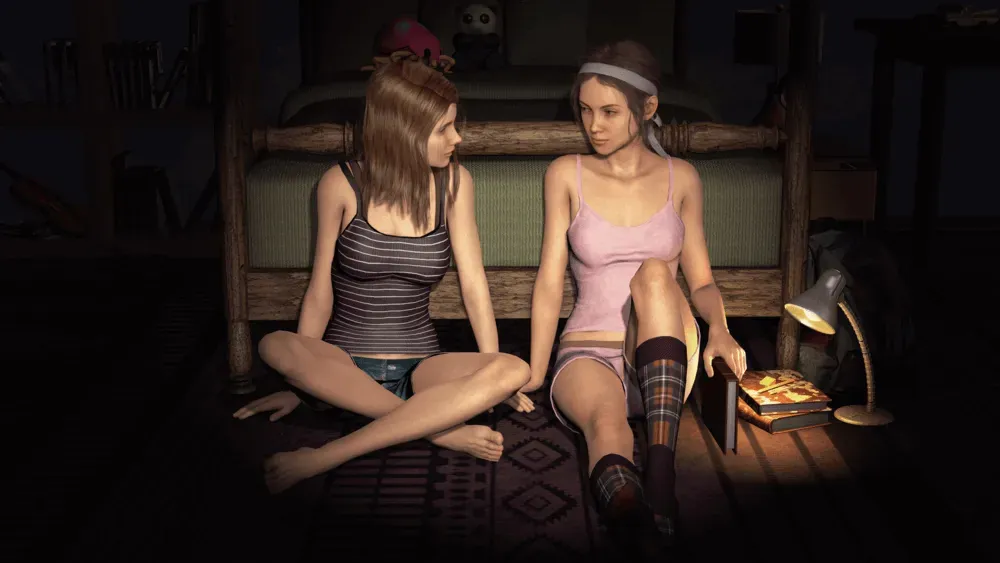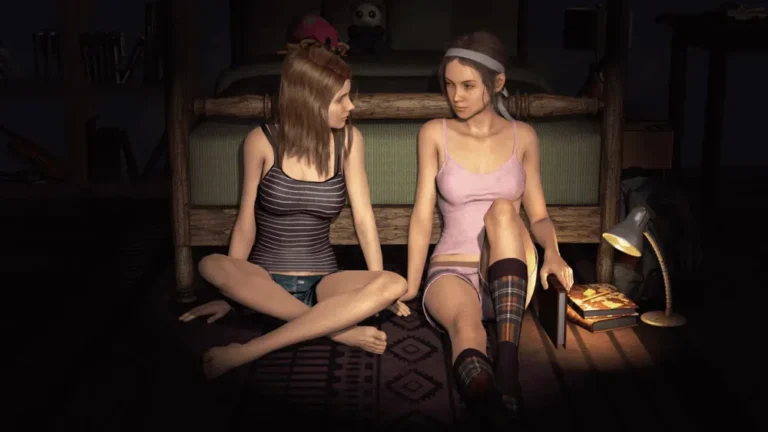
Short Sad Stories
Play Short Sad Stories
Short Sad Stories review
Exploring the Emotional and Narrative Depth of Short Sad Stories Game
Short Sad Stories is a distinctive interactive game that blends emotional storytelling with immersive gameplay. Centered around the character Alice, who navigates between reality and imagination, the game offers players a poignant experience filled with complex emotions and narrative depth. This article explores the core elements of Short Sad Stories, highlighting its storyline, gameplay features, and the emotional resonance it creates for players.
Understanding the Narrative of Short Sad Stories Game
Let me tell you about the first time I played through this game. I was expecting a quick, melancholic tale, but what I got was a profound emotional journey that stayed with me for days. The magic of this experience lies entirely in its masterful Short Sad Stories game narrative, a carefully crafted emotional landscape that you don’t just witness—you help shape. It’s more than a game; it’s a piece of interactive art that explores the delicate spaces between memory, love, and the stories we tell ourselves to heal. 😢✨
This chapter is your guide to understanding the intricate machinery behind this powerful experience. We’ll pull back the curtain on the characters, the themes, and the choices that make it so uniquely moving.
Who is Alice? Exploring the Protagonist 🎭
At the heart of this emotional journey is Alice. To understand the Short Sad Stories game narrative, you must first understand her. The Alice character story is not one of epic battles or world-saving quests, but something far more relatable and, in many ways, more brave: a journey through the landscape of personal grief and memory.
Alice is an artist, a dreamer, and someone grappling with a significant loss. What makes her so compelling is her quiet resilience. She isn’t a loud hero; she’s a reflection of our own quieter struggles. Through her eyes, we see a world tinged with both sorrow and beauty. Her sketches and imaginings aren’t just game mechanics; they are her coping mechanism, and they become ours as players. 🖌️📖
I remember one particular scene where Alice is simply sitting by a window, watching the rain. The game gave me a choice: to have her pick up her sketchbook or just continue to sit in silence. In that moment, I wasn’t just pushing a button; I was deciding how I would cope with that heavy feeling. That’s the genius of the Alice character story—her pain becomes a shared space where our choices as players hold real emotional weight. Her story is a mosaic of small, significant moments, and we are handed the tiles.
Themes and Emotional Depth in the Storyline 💔
The power of this emotional storytelling game doesn’t just come from what happens, but from the universal ideas it explores. The themes in Short Sad Stories are its backbone, giving depth and meaning to every interaction. This isn’t a story about one specific event; it’s about the human experience of navigating life after that event.
The game beautifully weaves together:
* Love and Loss: It explores how deeply love is intertwined with the pain of losing it. The memories aren’t just sad; they are precious because of the love they represent.
* Memory vs. Reality: Alice often revisits her memories, and the game cleverly asks: are we remembering things as they were, or as we needed them to be?
* The Healing Power of Imagination: Alice’s artistic world isn’t an escape from reality, but a tool for processing it. This theme celebrates creativity as a form of emotional survival.
To give you a clearer picture of how these themes directly influence your experience, here’s a breakdown:
| Theme | How It Manifests in Gameplay | Emotional Impact on the Player |
|---|---|---|
| The Fragility of Memory | Players reconstruct past events through Alice’s sketches, which can change based on dialogue choices. | Creates a sense of responsibility and melancholy; makes you question the reliability of your own narrative. |
| The Weight of Letting Go | Interactive narrative choices often present the player with the option to hold onto a memento or symbolically release it. | Evokes a powerful, personal sense of catharsis and forces introspection about your own attachments. |
| Finding Beauty in Sadness | The game’s visual and audio design juxtaposes somber themes with stunning, often dreamlike, aesthetics. | Teaches a poignant lesson about acknowledging pain without being consumed by it, leaving a bittersweet but hopeful feeling. |
This careful layering of themes is what elevates it from a simple sad story to a truly impactful emotional storytelling game. It’s not trying to make you cry for the sake of it; it’s inviting you to feel, reflect, and perhaps understand a little more about the complexities of the heart. 🌈
How the Story Unfolds: Narrative Structure and Player Choices 🧩
The game story structure in Short Sad Stories is deceptively simple. It doesn’t follow a traditional three-act Hollywood model. Instead, it feels more like flipping through a personal journal or wandering through a memory palace. The timeline is often fluid, moving between past and present, reality and Alice’s imaginative world. This structure is key to making you feel her disorientation and her process of piecing things back together.
But the true engine of this structure is the system of interactive narrative choices. This is where the theoretical becomes intensely personal. The player impact on story is not about choosing a “good” or “bad” ending. It’s much more nuanced than that.
My Tip: Don’t try to “game” the system. The most rewarding way to play is to make choices that feel true to you in the moment. That’s how you’ll create your version of Alice’s story.
Your choices typically influence the narrative in these profound ways:
* Emotional Tone: You decide whether a memory is recalled with fondness, regret, or anger, which changes the music and visual palette of the scene.
* Character Perspective: The interactive narrative choices can gently shift how Alice perceives her own past, leading to different internal monologues and reflections.
* The Nature of Closure: The game’s conclusion isn’t a single event, but a culmination of all your small decisions. The player impact on story determines what kind of peace, if any, Alice finds.
I played through the game twice. The first time, I made Alice hold onto everything, every letter, every memory. The ending felt quiet and heavy, like a long, slow sigh. The second time, I chose moments of release—letting a drawing float away on a river, burning a old, painful letter. The ending was still sad, but it was filled with a luminous, hopeful quality I hadn’t seen before. That’s the real magic. The game story structure is a container, and your interactive narrative choices are what you choose to fill it with.
Ultimately, the Short Sad Stories game narrative succeeds because it trusts you. It trusts you with its fragile protagonist, its heavy themes, and the freedom to navigate them. It’s a powerful reminder that in stories, as in life, the most significant moments are often the quietest ones, and the most meaningful power we have is the choice of how we respond to the world around us. This incredible player impact on story is what transforms a beautiful narrative into an unforgettable part of your own story. 🤝❤️
Short Sad Stories offers a compelling blend of narrative depth and emotional engagement, centered on the character Alice and her journey through a world between reality and imagination. Its unique storytelling and interactive elements create a memorable experience that resonates with players on a personal level. For those seeking a game that combines emotional storytelling with immersive gameplay, Short Sad Stories is a noteworthy choice. Dive into the game to explore its rich narrative and discover the layers of emotion it has to offer.








